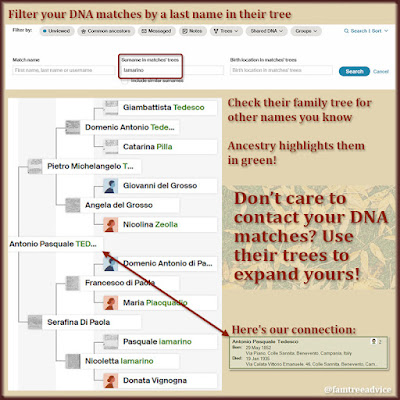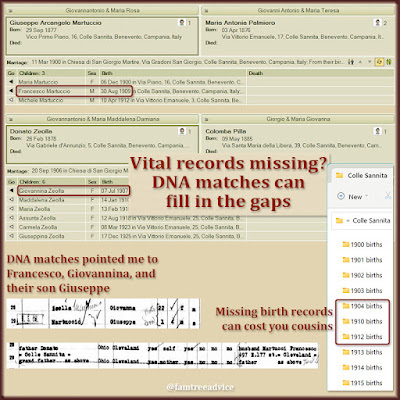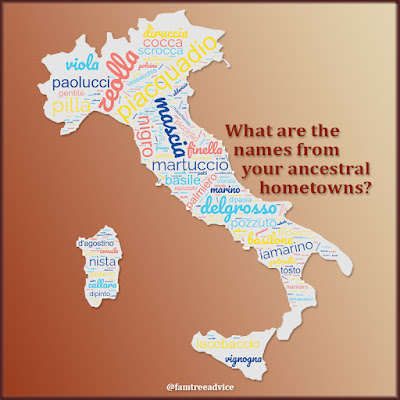Every day of the year seems to be National [something very specific] Day. National Checklist Day. National Candy Corn Day. November 1st is World Vegan Day. I propose we make November International Genealogy Loose Ends Month. Let's devote this month to finding and tying up loose ends in our family trees.
It's not unusual to focus on one branch of a family tree, or a big file organization project. Believe me, I know. I recently finished a two-year project to fit my Grandpa Iamarino's entire hometown into my family tree. And now I'm busy working on my Grandpa Leone's hometown.
But I know there are lots of loose ends in both my family tree and my genealogy research in general. I have people in my tree whose parents I haven't identified. I have a notebook full of very promising ship manifests listing people who should be in my tree. I have a virtual shoebox on Ancestry that I never look at.
Let's put a pin in our current research obsessions and clean up our trail of loose ends. This November let's make loose ends our top priority.
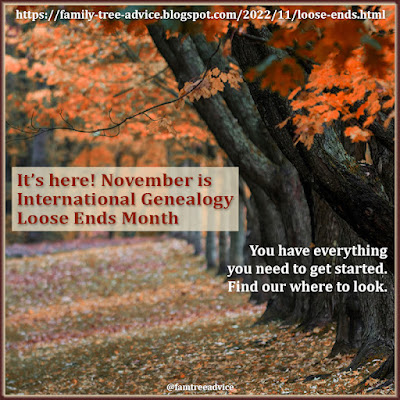 |
| You know all those family tree details you meant to go back and add? This is the best month to get it done. |
Here's the plan. Go through your different resources looking for missing information:
1. Notebooks
Do you keep any handwritten or digital notebooks while you're researching? I have an old notebook from my earliest days of genealogy research. I wrote down facts from tons of ship manifests I found online containing key names from my family tree.
A long time ago I went through the notebook and highlighted every entry that is in my Family Tree Maker file. But what about the rest? They need another look now that my family tree has grown so much.
Do you have a notebook or folder filled with potential leads?
2. Charts
If you track your findings in a spreadsheet, a binder, or a chart you hang on the wall, look it over for loose ends.
My document tracker shows me each document I need to find for each person before I can "close the book" on them. Before my recent mega-project, I checked my document tracker line-by-line to find those missing documents. I left off halfway through last names beginning with C. That's not very far at all.
What documentation do you have that needs your attention?
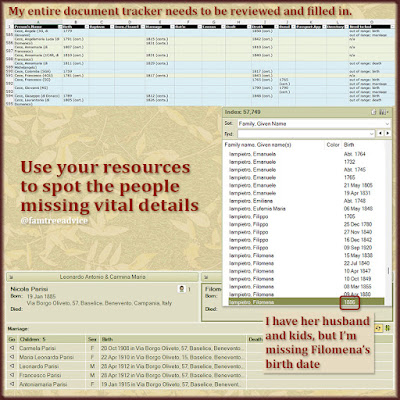 |
| Your own documents can show you the loose ends in your family tree. This month, see how many of them you can tie up. |
3. Unattached Items
How many family photos have you collected but not attached to your family tree? Maybe you haven't scanned them yet. If you don't have a flatbed scanner (they're not expensive), there are phone apps that can capture and perfect your photos. But please don't capture the photo at an odd angle or under glass with a reflection spoiling the image.
Do you have any folders, either paper or digital, with goodies you've found but haven't dealt with yet? If you have an Ancestry.com account, how's your shoebox looking? Mine has more than 99 items in it stretching back many years. Boy oh boy. Out of sight, out of mind, right?
What items have you put on the back-burner? This month, give them the attention they need.
4. Family Tree Index
My family tree may be a tad bigger than yours with 57,749 people. (Oh my God!) If yours isn't that huge, you can more easily view your list of people and look for holes you might be able to fill.
If you keep your tree on Ancestry, click Tree Search and choose "List of all people." I'm sure other family tree websites have a similar feature. Or, if you work in desktop family tree software as I do, your index is right there for you.
Check your index for people who are missing an exact date of birth. What research can you do to discover that birth date? Your family tree software may let you sort your index of people by their birth, death, or marriage date. Who do you see in the list whose dates you may find with some more research?
This second look will help you tie up loose ends you planned to get to later. Later is now!
5. Go Home
Go to the home person in your family tree, which is probably you. Make sure everyone from you through your 24 second great grandparents is fully documented. When they're done, work on all their children. Start with your own children, if you have any, then your siblings and their families, 1st cousins, 2nd cousins, etc.
Give everyone the once-over and see what you can add to make your family tree stronger.
Come on. Let's make International Genealogy Loose Ends Month a reality!
